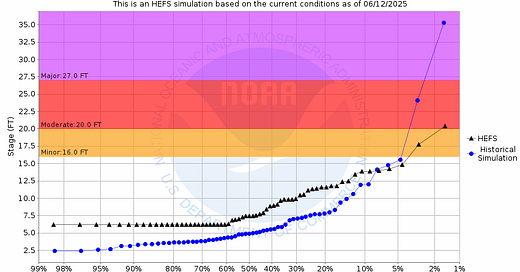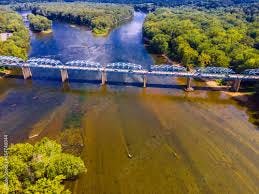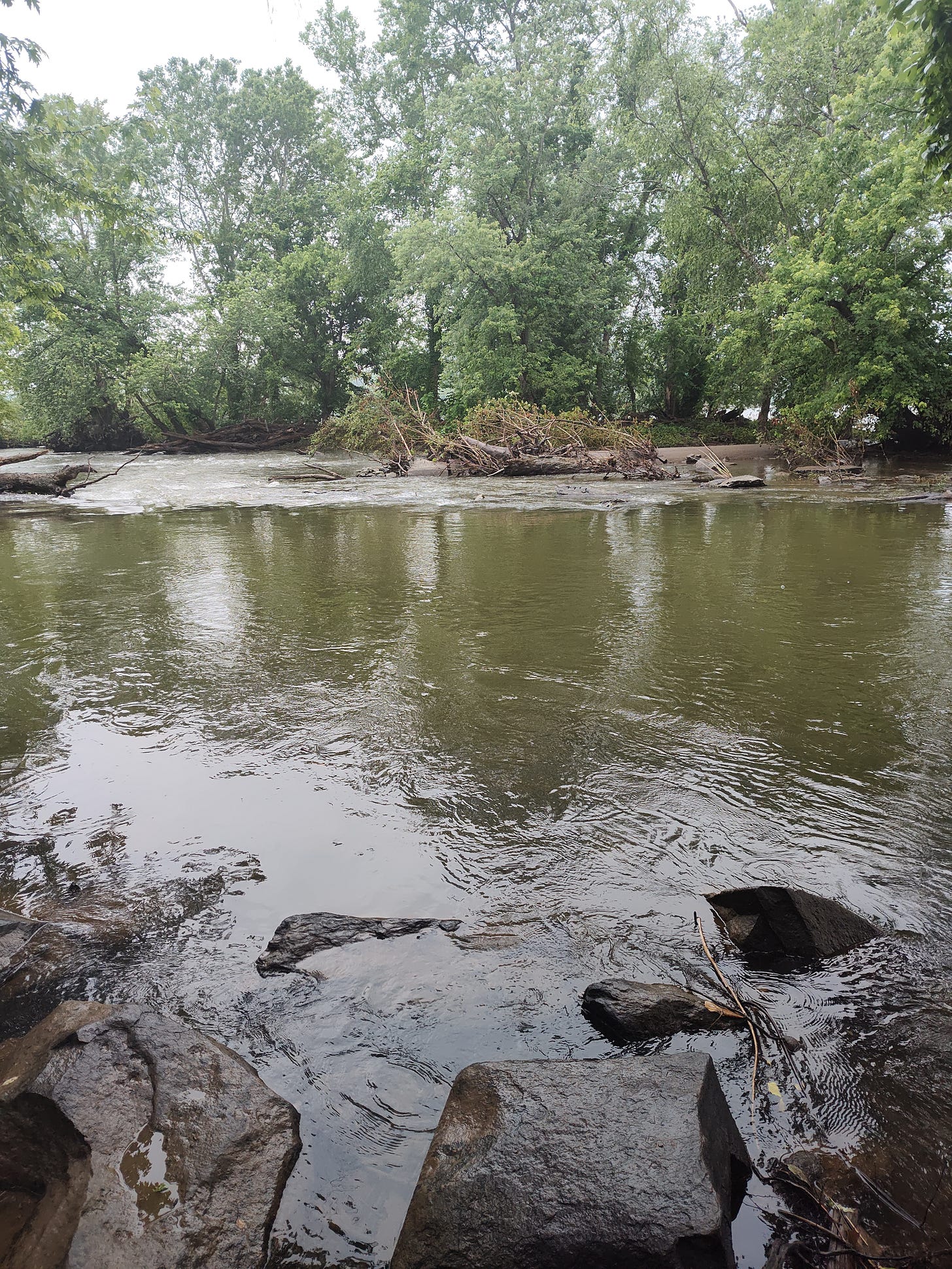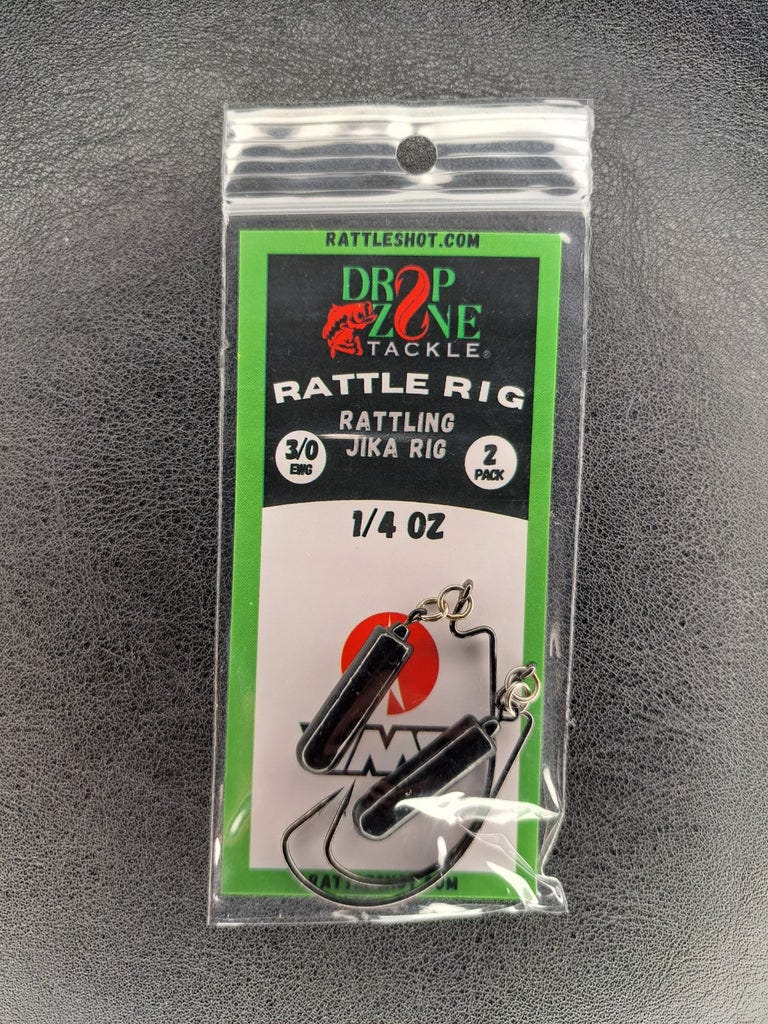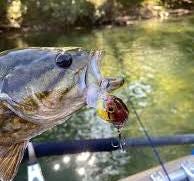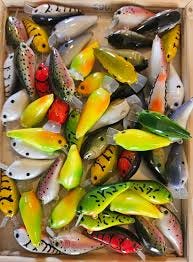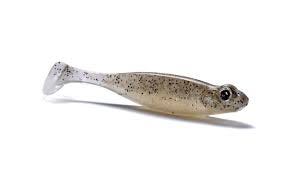The “Yo Yo Effect” is in full form this June after many river systems throughout the region have experienced multiple high water events and a recent flood stage level event. How Smallmouth react to these conditions and ultimately recover is important to examine to understand where Smallmouth will be located during early summer.
Recently we just witnessed the Upper Potomac River reach over twenty feet at the Point of Rocks gauge and while the river quickly fell back below ten feet and then back to normal levels the river is once again surging due to higher levels of rainfall and runoff entering the river.
Understanding Smallmouth Bass Behavior in Spring Flood Conditions and Post-Spawn Patterns in June (River Systems)
Angler Insights | Seasonal Strategy | Habitat & Behavior | Fishing Techniques
Spring High Water / Flood Stage – What Happens?
River Dynamics During Floods:
Rapidly rising water levels
Increased current velocity
Turbidity spikes (low visibility)
Bank overflow and inundated floodplains
Smallmouth Reaction:
Move tight to cover: roots, flooded brush, eddies
Seek current breaks: inside bends, backwaters, behind boulders
Prioritize safety and rest over feeding
Much of the response will depend upon your river system and its components as well as substrates that can impact where Smallies will locate. If a river is void of real structure or timber than often bends and locations like boulders that can break the flow become ideal. Smallies do not want to have to exert the levels of energy it will require to maintain positioning in rising water and will move to locate areas that provide them relief as best they can.
Rising water during or just post spawn can be very dangerous to the female Smallies that have just spawned because they may be in a weakened state BUT also can kick in survival instinct of feeding quickly to replenish energy.
Feeding Behavior in High Water
Low Feeding Activity Initially:
Smallmouth become cautious
Reduced visibility and energy conservation
Use ambush tactics in slack water- forage become targets of opportunity
Wrong place wrong time for forage also fleeing high water conditions especially to the shallows
Where to Target Them:
Submerged wood, flooded bushes, or newly flooded shorelines. Shallow or bank areas have become the dominant location for most Mid-Atlantic river systems especially those lacking significant fallen timber.
Eddies and slack water near current seams. These areas become harder to isolate the higher the water rises and at various levels almost undiscoverable until the water begins to recede.
Behind large structures: rock piles, bridge pilings and other natural areas. Ledges for example while natural due to topography of the river floor often will no longer provide Smallies the safety they normally do as the current flow and river rises and those ledge Smallies will relocate.
Best Lures/Techniques:
Spinnerbaits with bright blades in rising water. Opt for differing blades. While the rising water may certainly murk up the water the sound vibration is critical to attract Smallies
Chartreuse or Bright Colored cranks are effective shallow BUT many a crank gets lost in rising water as they often get snagged by debris being pushed down river. Opt for cranks with knockers. Lipless Cranks can be extremely effective during high water given compact form and vibrating/noise element.
Creature baits rigged weedless or soft plastics especially shallow as these mimic the forage areas disturbed by the rising water.
Noisy, slow-moving presentations— placing rattle heads with worms or utilizing jigs with rattles if effective in the regard
Important to study your forage specie. Many will be directly impacted by rising water in terms of their normal habitat and as their habitat gets disturbed and they move they become targets. This applies to the substrate being disturbed and Crawfish become exposed who often cannot remain fixed at bottom of river due to the current flow thus they push shallow as well.
Angler Shane Crawford (VA) managed to catch 100 inches of Smallmouth in a recent Upper Potomac River kayak fishing event on June 8, 2025 during rising high water. Many would never expect a 100 inch limit to come from the Upper Potomac River but that is exactly the opportunity when the rising water converges with the immediate post spawn period in the river. Three of his catches are shown here (21.25, 20.75, 20.25) with each one being a Virginia citation Smallmouth measuring at least 20 inches.
As Water Recedes – Transition Begins
Receding Stage Behavior:
Bass reposition from flooded areas back toward main river or middle river. We see this repeatedly in our river systems.
Begin to stage near spawning flats or post-spawn transition zones
Key areas: Secondary channels, gravel banks, current seams
Previous areas where eddies and such that existed will begin to reappear as the water recedes and even new areas may have been created such as timber brought down river being jammed forming calmer water behind it or adjacent. It will not take long for Smallies to locate new areas offering safety and security.
Feeding Increases:
Stable conditions = predictable prey movement
Targeting crawfish and baitfish again
Aggressive post-spawn feeding, especially for females
The timing of high water can produce incredible fishing opportunities for both kayak and wade anglers in river systems that boats can not access. Forage and Smallmouth converge shallow during the rising water and feeding can get intense especially for those females coming off the spawn. Just as the forage becomes targets so to will the Smallie fry from the spawn by other fish species in the river.
June Patterns – Post-Spawn & Early Summer
Where They Go: Normal pool or Normal levels
Move to nearby deeper pools, ledges, or slow current stretches
Utilize current-adjacent structure: boulders, islands, drop-offs
May stay within 100–300 yards of spawning areas
May come up shallow during mornings and move back middle river until sunset
Influencing Factors:
Water clarity: Seek slightly stained water for ambush- Look for those areas where you can see stained water and then it clear up a bit. These are much like seams in the river for Smallies.
Oxygen levels: Active in well-oxygenated zones (riffles, tailouts)— in systems with dams often Smallies will move towards these areas for summer specifically for the oxygen levels and often cleaner water. If you river is void of grass and is mostly rock than this happens more often than not.
Avoid low-oxygen stagnant areas (especially in low-flow summers)
Best Techniques for June Smallmouth
1. Topwater Lures
Early morning or overcast days- our Smallies tend to like light rains
Walking baits, poppers, buzzbaits near boulder-strewn flats
Whopper Ploppers still remain effective even though Smallmouth have become conditioned to them. Change up the sizes utilized depending upon the water levels. SUMMER Cicadas— if the cicadas are hatching downsize to smaller poppers and ploppers and be sure to run them under overhanging trees shallow.
Chatterbaits- while not a “traditional” top water many are utilizing chatter differently these days and “burning” them closer to the top of the water column. Newer releases in design are also doing this as chatters are getting lighter.
HH Custom Baits out of PA has mastered this micro presentation combining finesse jig/chatterbaits hybrid which Smallies can never seem to lay off of. The beauty of these baits in this line up from HH Custom Baits is they can be utilized so effectively in both low and rising water and the application becomes endless. One can fish it like a chatter or drag it for bottom feeders where the blade flashes as jig is worked up off the bottom and allowed to fall back down. If you love the jig and fish river system watersheds like Susky, Allegheny, Upper Potomac, Monocacy, Shenandoah or James River check the options out. They also have a spinnerbait lineup as well.
https://www.hhcustombaitsllc.com/shop-hhcustombaits
https://youtube.com/shorts/Zr-eybx5pbo?si=6RlgcWSvxcOrbUwC
2. Ned Rig / Neko Rig/Jika Rig
Drag along bottom near current seams and breaks
Subtle presentations key post-spawn- see Drop Zone Tackle for effective presentations using the Rattle Rig. Find here: https://rattleshot.com/products/rattle-rig
Back Sliding is highly effective with Tubes as well and these rigs can be utilized for that as well coming off the bottom
3. Crankbaits and Jerkbaits
Use mid-depth and shallow divers near drop-offs from Lake’s Edge Lures (pictured above)
Natural patterns in clear water, bold in stained
Jerkbaits— match your bait fish size- 60mm to 90mm most effective in kost of our river systems as opposed to 110mm
Lake’s Edge Lures Cranks: https://www.facebook.com/lakesedgelures/
4. Swimbaits & Such
Target smallmouth chasing baitfish especailly transitioning Smallies moving from shallows to deeper pools for the summer
Retrieve just fast enough to stay off the bottom
Dial in the right size. In most inland river systems likely will not want to exceed four inches in swimbait/glide baits (hard)
Paddle Tail (Boot tail) still remains the dominant player and these can be fished throughout the river effectively. Adjust the weight accordingly. Keitech remain the most popular given the dozens of color schemes and sizes available but also Megabass as a line up of soft plastics that far too may sleep on ranging from the effective Hazedong to the thicker and bigger Spark Shad. YES Megabass does more than just hard baits!!
Remember techniques are predicated on your river conditions.
During the summer your river likely experiences low conditions which means the water column is compressed. This means your Smallies on the bottom are only look up about two feet or less versus four or five feet. Adjust your weights to address low levels because your rate of fall in two feet may be too fast. You need to adjust weights and sizes for the strike zone and to remain within sight of the bass for as long as possible giving them ample opportunity to pounce. REACTION strikes may decline the hotter the river systems becomes and Smallies may be less willing to chase past the early morning period.
Key River Areas to Focus on in June
Outside bends with boulders or wood
Downstream sides of gravel bars
Mouths of feeder creeks with flow- or Tributary Mouths
Isolated rock piles or submerged ledges
Transition zones from fast to slow water
Water Clarity & Oxygen – Why They Matter
Clarity:
Smallmouth prefer clear to slightly stained water
Adjust bait color and vibration to clarity levels
Oxygen:
Warmer temps = lower oxygen in stagnant areas
Fish gravitate toward oxygen-rich zones:
Riffles
Aerated tailwaters—- dams — watch for when the open gates
Areas with aquatic vegetation (in moderation)
Final Tips for Targeting June Smallmouth in Rivers
✅ Match forage – crawfish and baitfish patterns
✅ Fish early or during overcast for best surface action
✅ Focus on structure near current
✅ Go light – downsized finesse baits for pressured bass
✅ Stay mobile – cover water efficiently
Questions & Application
Ask Yourself:
Where did the bass spawn nearby?
Where’s the next deep-water refuge?
Where can they ambush prey with little effort?
June Smallmouth = Recovery + Aggression
Be strategic, and you’ll intercept them right where you know they will be or end up during the day. It may take some trial and error but once you dial in their preferred movement be there as they arrive during the feeding periods of the day.
Resources:
Contact:
smalliechaserriverbassin@gmail.com
You Tube:
Smallie Chaser River Bassin:
You Tube: https://www.youtube.com/@TheSmallieChaserChannel
J.L. Scott Fishing
You Tube: https://www.youtube.com/@J.L.ScottFishing
Kayak Fishing Event/Wade Fishing Event:
TourneyX: Clubs Tab (Virginia) Tournament Fishing App
https://tourneyx.com/app/category/va---smallie-chaser-river-bassin
Community:
DISCORD: Free To Join (Smallmouth)
https://discord.gg/KtpkAJchUP

